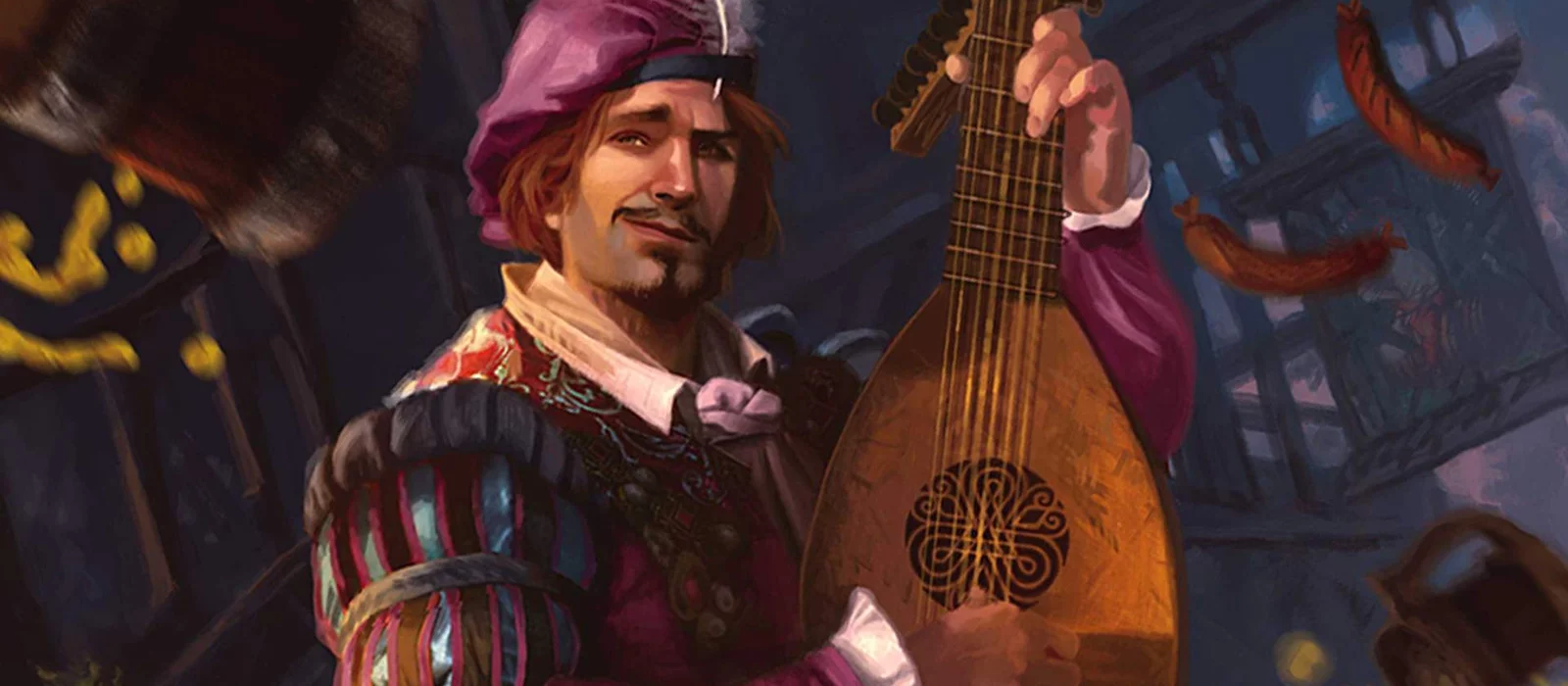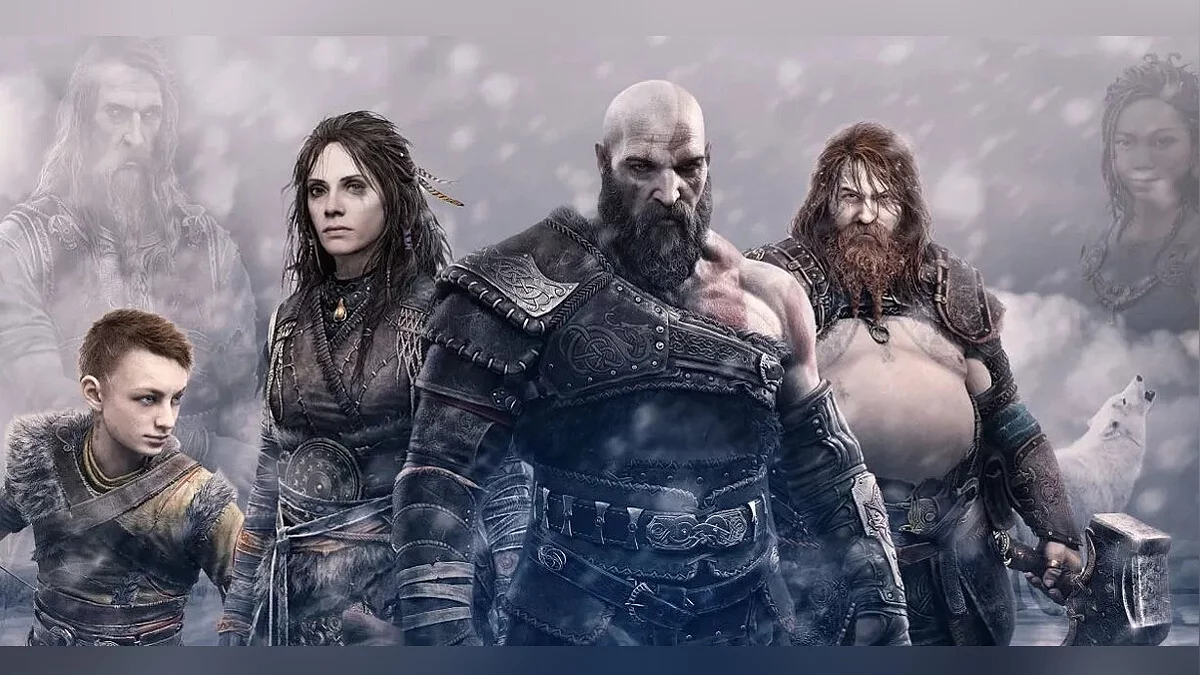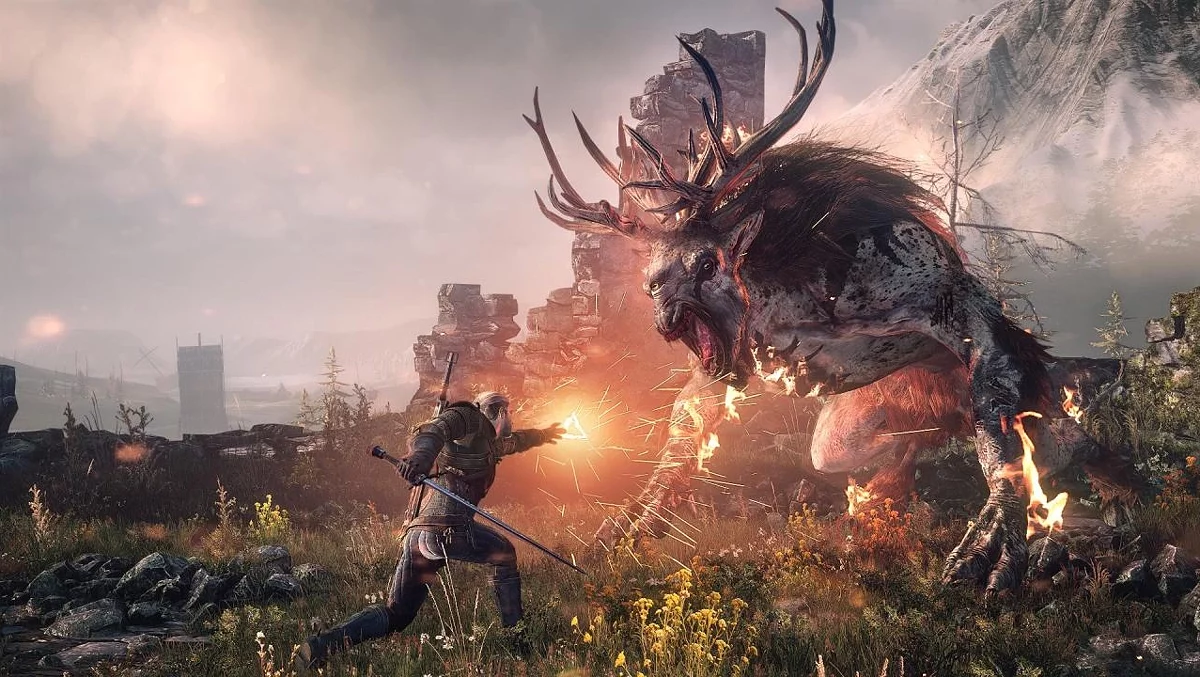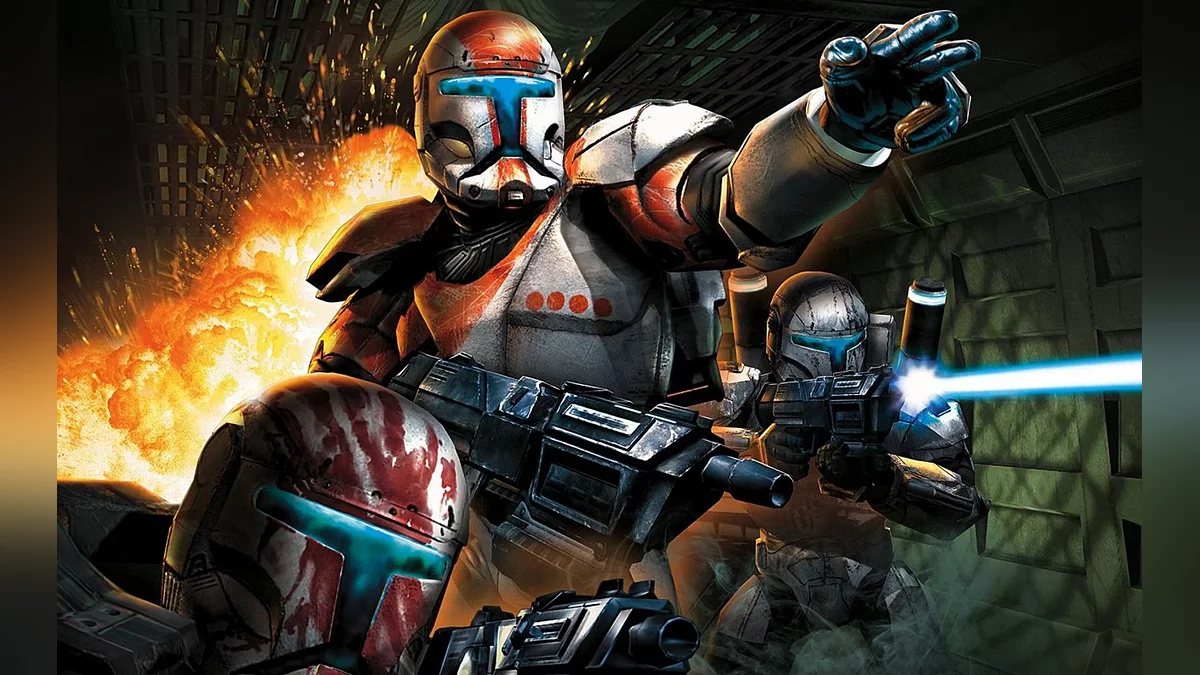How Game Music Is Made: God of War, The Witcher 3: Wild Hunt, and Star Wars: Republic Commando

Making music for games is a mystery shrouded in darkness. We often hear about the inspirations behind the writers, artists, directors, and game designers of popular games, but composers rarely get a chance to bask in the glory. We decided to fix that and tell you how the most interesting game soundtracks were created.
God of War (2018)
- Composer: Bear McCreary;
- Performers: Male and female choirs, orchestra conducted by Bear McCreary;
- Instruments: symphony orchestra, nyckelharpa, hurdy-gurdy.
Greek and Scandinavian epics are noticeably different from each other, but explore similar themes and stories. So the music for the sequel (soft reboot) God of War had to be different from the music of the previous parts, but retain its heritage. In a documentary about the making of the game, composer Bear McCreary explains that all musical decisions come from the story and characters — motifs, arrangement, even the language of the choral singing.
The composition Memories of Mother, which is used in the game as the leitmotif of the mother
The God of War soundtrack is like a narrator. It emphasizes the actions and motives of the characters, adding depth to them and showing the development of the heroes. To do this, McCreary uses leitmotifs — musical themes or phrases associated with a specific character, action, or event. The most famous modern example of the successful use of this technique is the music of John Williams in the Star Wars films. But historically, they are associated with Richard Wagner, who achieved perfection in their use in his later musical dramas. His most famous work is the opera cycle Der Ring des Nibelungen, based on Germanic-Scandinavian mythology, which ends with the burning of the hall of the gods Valhalla and all the gods along with it.
The main and most obvious example of a leitmotif in God of War is Kratos' theme. A short phrase consisting of only three notes, stern, calm and laconic, like the god of war himself. McCreary did not know how to start the game's theme, threw together these three notes, sent them to the developers and was surprised by their admiration. In just three notes, he managed to convey the character of a more experienced and seasoned Kratos. Bear compares the repetition of this simple phrase to a father drumming into his son the truisms. Over and over, word for word, tirelessly, with iron, almost unshakable patience. Like all the other leitmotifs, Kratos' theme changes throughout the game, showing his more vulnerable and emotional side through changes in key and arrangement.
Continuing with the ideas of previous games, which sang in Greek (perhaps we will tell the story of these soundtracks in the future — write in the comments), McCreary wrote the lyrics for the choir in Old Norse and transcribed it so that it could be read. The closest modern language to Old Norse is Icelandic, so Bear went to Iceland, where he recorded a male and female choir.
In 2016, Sony took an unprecedented step. The debut screening of God of War gameplay was accompanied live by a symphony orchestra and choir, led by Bear McCreary himself. Many people dream of playing games on a giant movie screen, but a soundtrack from a real orchestra is a whole other level!
The Witcher 3: Wild Hunt (2015)
- Composer: Marcin Przybyłowicz;
- Performers: Brandenburg State Orchestra (Frankfurt), Percival (Mikołaj Rybacki, Joanna Lacher, Katarzyna Bromirska), Żywiołak (Robert Jaworski), Amir Yaghmai, Andrew Duckles;
- Instruments: choir, lute, hurdy-gurdy, saz, medieval fiddle, gusli, kamancha, tanbur, haicak, viola, bouzouki, mandolin, dulcimer, whistle, medieval flute, electric and acoustic cellos.
After finishing work on The Witcher 2: Assassins of Kings (The Witcher 2: Assassins of Kings), the in-house composer at CD Projekt RED was faced with the question of how to develop the music in the third part. For most games, music is written like for films — a classical symphony orchestra, possibly with a choir, sometimes with a mixture of modern musical instruments. However, Marcin wanted to give the game a medieval and Slavic flavor, so he turned to the folk band Percival. Not only does it specialize in folk instruments, folk and pagan metal, but it is also named after the dwarf Percival Schuttenbach from the books by Sapkowski (Andrzej Sapkowski).
At first, Marcin approached the work with the musicians in a classical way — he prepared notes, scripts, scale tables, everything according to science. But it turned out that two thirds of the group were self-taught, only Katarzyna Bromirska had a musical education. Gritting his teeth, all the preparations had to be thrown out, and the recording sessions became improvisations. Marcin was afraid that nothing would work out.
The Witcher 3: Wild Hunt soundtrack, Go For It, main instrument hurdy-gurdy
As it turned out, he was afraid in vain. Marcin, Percival and Polish folk musician Robert Jaworski locked themselves in a studio with instruments for several days, sang folk songs, played the most unusual instruments they could find. For example, a custom-made hurdy-gurdy. Usually this instrument has three strings, but they used a seven-string, which, according to Marcin, sounds very dark and devilish. Jaworski also played a medieval violin with a modern pickup, which allowed him to superimpose modern effects on the historical instrument and get an incredible sound.
Soundtrack The Witcher 3: Wild Hunt, composition The Song Of The Sword-Dancer
Composition "Begla Starozha", performed by Leonid Bortkevich
Joanna Lacher and Katarzyna Bromirska from Percival sang songs of Slavic peoples. Interestingly, these songs are not about war. For example, The Song of the Sword–Dancer, which plays during the steel sword fight north of No Man's Land in Velen, is a Belarusian wedding song called "Begla Starozha" about warriors coming to a guy at night, telling him that the Khazars (Tatars in the original Belarusian lyrics) have kidnapped a girl, and calling him to beat the Khazars, rescue the captive, and marry her.
The Witcher 3: Wild Hunt soundtrack, Steel For Humans
Steel for Humans is a Bulgarian song about unmarried girls who undergo a rite of passage into women on Azure Saturday. The lyrics are literally the same — they wish health to the house; they bring a girl; get married, girl; get married, boy. However, the arrangement and tone of the performance make even the most ordinary songs threatening and combative, adapting them to the dark world of the game, where simple peasants are forced to live during a bloody war and among monsters.
Soundtrack The Witcher 3: Wild Hunt, composition Child Of The Elder Blood
In parallel, highly specialized musicians with unique instruments were recorded in Los Angeles. For example, Andrew Duckles and his viola, made in 1610 by the legendary master Giovanni Paolo Maggini, whose instruments are as rare and valuable as Stradivari for violins and cellos. This viola was found in 20 pieces in bombed-out Dresden, and Duckles spent a year restoring it, choosing the same type of wood. By today's standards, this viola is gigantic, because in the 17th century, violas like these were played like cellos.
Other interesting instruments: a special gusli made like the 12th-century gusli found in the excavations, and the main instrument of the soundtrack, the baglama, also known as the saz. This is a Turkish lute with a very long neck.
The song "Wolf Storm" in 12 different languages
The Wild Hunt soundtrack is almost entirely written in D major because that is the native key of most instruments, and all the vocal parts are solo, which makes it stand out even more from the rest. Bardess Priscilla's song "Wolf Storm" was especially difficult. Its performance is part of the main plot of the game, so it was written taking into account all seven localization languages - English, Polish, Russian, German, French, Japanese, Brazilian and Portuguese. It had to sound beautiful and melodic in all languages, conveying the awkwardness of the scene in which Geralt is forced to listen to the story of his relationship with the sorceress Yennefer. However, the Russian version is much more precise in its wording. For example, the line "I don't know if you are my destiny" is much more meaningful to fans of Sapkowski's books than the faceless "fate" in I know not if fate would have us live as one.
Star Wars: Republic Commando (2005)
- Composer: Jesse Harlin;
- Performers: Male choir;
- Instruments: choir, synthesizers, gong, lion's roar drums, taiko, timpani, talk box, prepared piano.
The first-person shooter Star Wars: Republic Commando, released in 2005, remains a unique work in the Star Wars universe. The sticky blood of Trandoshian slavers flowed down the protagonist's visor, his vibroblade was equally effective in killing organic opponents and cutting off the power supply to battle droid processors. And throughout the entire eight-hour story, we were accompanied by the most unusual music for Star Wars, which can only be compared in its unique sound to the soundtrack of the series The Mandalorian. We contacted Republic Commando composer Jesse Harlin, and he told us about the creation of the unusual music for the game.
A clip from the film Star Wars: Attack of the Clones (2002), composer John Williams
Harlin, LucasArts' in-house composer, faced a challenging task. The game's main characters were stormtroopers, and John Williams had not written a musical theme for the "heroic stormtroopers" in any of the five films that existed at the time. Only the biggest fans of Williams' work noticed that not all of the music from Star Wars. Episode 2: Attack of the Clones was written specifically for this film. For example, Anakin flies across Tatooine on a speeder to the "Duel of the Fates" from the previous film. And the debut of the clone army received only one musical stinger, which Jesse had to use throughout the entire game to subconsciously connect its events and characters with the films.
But the problem remained. In "Attack of the Clones", the clones themselves are shown as absolutely identical, faceless copies of each other. However, George Lucas insisted that each member of Delta Squad receive their own voice and unique character. Harlin was also required to make the clone special forces more human. And what could be more human than a human voice? So he came up with the idea of linking the game's soundtrack with army hymns with choral singing.
However, many composers are madly against choral singing in English, but using another real language seemed impossible to Jesse. So he asked his girlfriend (now wife), who studied linguistics, to tell him how exactly languages are formed, what words are in all of them, what sounds are more popular and which are less. For example, negation in almost all languages of the world begins with the sound "n". As a result, the maestro came up with his own alphabet and played with the sounds of words for a long time to compose marches. To invent the language, Harlin listened to Hungarian and Russian speech. Then Jesse contacted LucasFilm and suggested using the language he invented as Ancient Mandalorian, in honor of the culture of the clone prototype Jango Fett. He was afraid that he would be rejected, but LucasFilm happily accepted the idea, and the author of the novelizations Karen Traviss developed the language even more in her books.
Star Wars: Republic Commando main theme/Vode An, the anthem of the Grand Army of the Republic
The main theme of the game and, by the way, the anthem of the Grand Army of the Republic, Vode An, which in Mandalorian means "We are all brothers", is based on the anthem of the USSR. Harlin studied Soviet marches and anthems, paying attention to the overarching themes of overcoming obstacles. In the middle of the anthem of the clone army, it is sung "And glory, eternal glory, together we will bear its weight", using the word "glory" not in a positive context, but predicting the bad reputation that clones and imperial stormtroopers will earn. Some lines are even similar to lines from the Soviet anthem of the Great Patriotic War: "Forged like a sword in the flames of death, we are all brothers" is reminiscent of "We raised our army in battles."
The USSR Anthem, 1943 version (composer A. V. Alexandrov, lyrics by S. V. Mikhalkov, El-Registan)
The scene of hacking three consoles at the end of the second act of Star Wars: Republic Commando (dynamic music can be heard from 21:20)
Republic Commando was made on the Unreal Engine 2, which is very far from modern UE versions in terms of functionality. In terms of music, the functionality was extremely spartan — it could turn it on and off. Therefore, LucasArts Senior Engineer Michelle Hinners wrote a dynamic music system for the game, which allowed not only to select samples depending on the situation, but also to superimpose them on each other. For example, at the end of the second chapter, the heroes have to hack three consoles while fighting off attackers. They can do it in any order, but with each successfully hacked console, the number of attackers increases, and the music becomes more intense.
Star Wars: Republic Commando Soundtrack, They Must Be Asleep
To create a unique sound, Harlin and another LucasArts staff composer, Mark Griskey, experimented with a variety of instruments, including a rented kettledrum so large that it didn't fit through the studio door and remained in the hallway. But Harlin and Grisky's favorite sounds were the giant gong, which they stuck duct tape to and then peeled off as quickly as possible, producing a very unusual sound with a long resonance, and the "lion's roar" friction drum, which consists of a jug, a skin membrane stretched over it, and a cord tied to it. When the cord is pulled and rubbed, it or the membrane produces long sounds similar to a growl. Jesse also used a piano, the strings of which were inserted with screws, bolts, and cutlery to achieve a unique sound. The sounds from this session went into the second chapter of the game about a captured Star Destroyer, the beginning of which is similar to the movie "Alien". Strange and unfamiliar sounds play on the nerves, make you expect a catch even in completely empty and abandoned corridors of the ship.
Star Wars: Republic Commando Soundtrack, track Dha Werda Verda
The final chapter of the game takes place in parallel with the beginning of "Revenge of the Sith" (Star Wars. Episode 3: Revenge of the Sith). Delta Squad, led by the main character, lands on the Wookiee planet Kashyyyk to reconnoiter the situation before the arrival of the main forces led by Master Yoda, and also to free the Wookiee leader Tarfful, who can also be seen in the game Star Wars Jedi: Fallen Order. This situation is similar to the Vietnam War, so the lead audio designer of the game, David Collins, asked to use taiko drums and take into account films about Vietnam. It turns out that one of the interns is a talented didgeridoo player, a giant wind instrument of the Australian aborigines, and almost all the tracks in Chapter 3 feature the unusual sound of this giant instrument.
The song Clones by Ash, written for the game, can be heard in the credits
The Republic Commando soundtrack was so unusual that focus groups said that although they liked it, they did not hear Star Wars in it, so the music written for the game had to be diluted with classic Williams tracks. The song Clones by Ash, written specifically for the game, is only heard in the credits; the game team decided that guitars would sound strange in the Star Wars world.
And finally, the most interesting thing: Jesse Harlin claims that he recently recorded a new version of Vode An (We Are All Brothers, the anthem of the Grand Army of the Republic and the theme of Republic Commando) for a game that he can’t talk about yet. Perhaps clone commandos will be added to the mobile Star Wars: Galaxy of Heroes, or we will see a new game featuring clones or, who knows, a remake/sequel of Star Wars: Republic Commando. Will we save Sav 20 years later?
***
One common feature that we noticed while working on the article is the composers’ rejection of typical European symphonic instruments. They can be used as a basis or for accents (as in Republic Commando), but it is the unusual solutions that are memorable — an Icelandic choir singing in Old Norse, a unique four-hundred-year-old alto, giant Japanese drums and an Australian trumpet. The soundtracks of the mentioned projects play the same important role as the plot, acting and gameplay. They immerse us in another world, so as not to let us go until the very credits.
And what do you think about the soundtracks of the games from our material?
-
Underwater Nocturne in Genshin Impact: How to Find the Blank Music Score
-
How to solve the music box puzzle in Silent Hill 2
-
Musician Turns Down Rockstar's Lowball $7500 Offer for GTA 6 Track
-
VGTimes' In-Depth Talk with King's Bounty II Devs: Combat, Locations, Characters, Music, and More
-
The Witcher 3 and Cyberpunk 2077 Co-Creators Show New The Blood of Dawnwalker Teaser




















